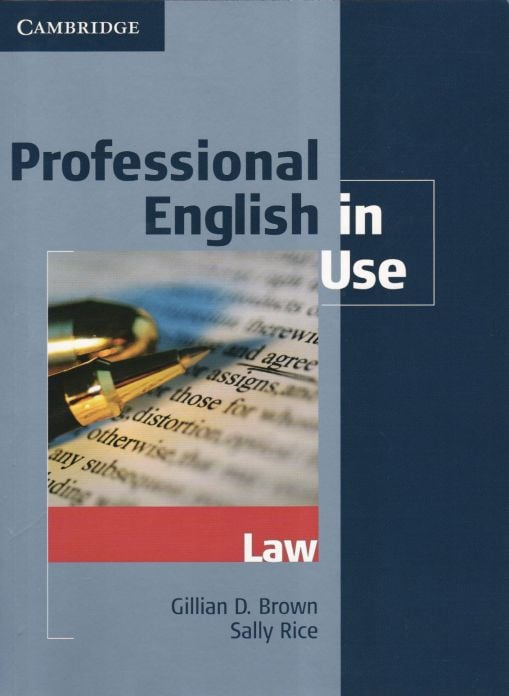The Professional English in Use series is aimed at upper intermediate to advanced learners primarily for self-study, but it can also be used in private classes. For working students, or those planning to work, it is essential to be able to understand more specific English vocabulary geared towards a specific industry; for example, law. The 45 chapters of this book, equipped with answer keys and a plentiful vocabulary index, cover a wide spectrum of this legal vocabulary
The introduction explains the textbook’s focus on legal vocabulary, and its pertinence to law students, practicing lawyers, and the like. The authors make it very clear that this isn’t an introduction to law, but that the vocabulary is taught within the context of UK legal systems. As such, the book stands appropriate for any student wishing to extend or improve their legal vocabulary, and the 45 units provide four main sections in which to do so, covering: the legal system, legal professionals, legal professionals in practice and law in practice.
Each unit begins with one to three texts explaining key legal terms; in the first unit this includes the structure of the law, and the constitution and jurisdiction. In each, text important words or phrases are highlighted in order to draw the student’s attention to them. Using these, the student then has to complete a number of exercises. For example: identifying words from a text by its definition, finishing sentences with blank spaces, and interactive activities which encourage the student to describe features of the legal system in their own country. In addition the text includes grammar exercises, centred on legal terms.

The English used in the texts of each unit is very advanced, creating a book too dense to be studied at a fast pace. Although it has been marketed as a self-study textbook, it is difficult to believe how an intermediate student could read these texts and completely understand them. The third unit includes a long speech by a practicing lawyer that even a student with a good dictionary would struggle to comprehend. However, any general English teacher might have trouble explaining the concepts that are discussed, so this book is better suited not only for students with at least some knowledge of law, but also teachers who are familiar with legal jargon.
"The English used in the texts of each unit is very advanced, creating a book too dense to be studied at a fast pace."
All of the units follow a very similar layout of texts followed by a few exercises; the authors have clearly chosen the method of teaching legal vocabulary and ideas mainly through reading activities. This means that it doesn’t lend itself very well to group classes or someone who wishes to test their knowledge, it requires learning the hard way with a dictionary close to hand and will take up a lot of time. There are 45 units, only capable of being completed by someone with a lot of patience and plenty of free time; however it is more achievable if a student concentrates on areas which are pertinent to themselves. For example, law in practice.
The textbook is quite up-to-date since it includes more recent legal cases and concepts such as information technology law and environmental law. Overall, Professional English in Use is a very difficult textbook as it ambitiously sets out to comprehensively teach students as much about legal vocabulary as possible. That being said, the book would be better off if divided into 2 or 3 separate texts, as it’s highly improbable any student is capable of thoroughly completing all 45 chapters (and for other students, there are only certain areas they’d be interested in studying).The books would also benefit from more exercises: applying all 4 language skills instead of referring students to other books, speeches, and websites. In reality, if a student just wanted to learn legal terminology through reading they could just do this via the internet, and if a teacher wished to use this book they would have to create activities or exercises to supplement it as there simply isn’t enough in each unit.




